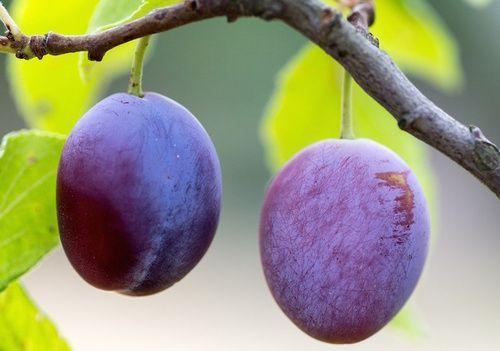The plums, eaten dry or fresh, they can be on our tables all year round. Remineralizing and rich in nutrients they are a valid help against fatigue and allies against osteoporosis. Let's find out better.
> 2. Properties and benefits of plums
> 3. Calories and nutritional values of prunes
> 4. Allied with
> 6. A recipe with prunes

Description of the plant
Prunus domestica, belongs to the Rosaceae family. Fresh between late summer and early autumn, dried all year round, the prunes they can be on our tables in every season. When fresh, their taste is slightly sour, but they still contain a lot of sugars; therefore they are not suitable in case of diabetes.
Properties and benefits of plums
Thanks to their content of Vitamins e mineral salts, the prunes they help to replenish minerals and are a valid help against fatigue. The pulp is rich in substances antioxidants such as flavonoids and polyphenols.
The fruit also contains diphenylisatin, a substance that stimulates intestinal function; plums, therefore, are useful in case of constipation. They are also detoxifying and diuretic.
La yellow-skinned plum is the one with the highest fiber content, while the red-skinned pluma is the richest in antioxidants.
According to a study conducted by the team of Dr. Bahram Arjmandi, of Florida State University in Tallahassee (USA) and published in the British Journal of Nutrition, the prunes help preventOsteoporosis in women in menopause.
Dried plums are richer in nutrients, but have a calorific value over 4 times higher than fresh plums. Plums are not allies of colitis sufferers, as they are their consumption can increase swelling and spasms.
Calories and nutritional values of prunes
100 g of plums contain 42 kcal / 177 kj.
In addition, for 100 g of product there are:
- Water 87,50g
- Carbohydrates 10,50g
- Sugar 10,50g
- Protein 0,50g
- Fats 0,10g
- Total fiber 1,50g
- Sodium 2mg
- Potassium 190mg
- Iron 0,20mg
- Calcium 13mg
- Phosphorus 14mg
- Vitamin B1 0,08mg
- Vitamin B2 0,05mg
- Vitamin B3 0,50mg
- Vitamin A 16µg
- Vitamin C 5mg
Plums, allies of
Intestine, bones, hair, skin.
Curiosities about plums
- According to some theories, the plum was introduced to Europe by the knights of the First Crusade around 1200.
- Plums should be harvested when they are ripe at the right point; if they are harvested unripe, they are unlikely to ripen.
A recipe with prunes
Prunes are an excellent alternative for a children's snack at school: natural and energizing, as well as very digestible. An idea for a highly remineralizing snack? They can be prepared small bundles with plums and almonds, just toast the peeled almonds in the oven, open the prune in half and remove the stone (obviously if it has not already been pitted), insert the almond in the middle, just in place of the stone, add a little bit of cocoa and cinnamon in powder.
Plums among the fruits of summer: discover the other summer fruits


























